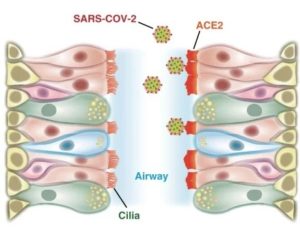
Garry Nolan, Ph.D.
AIMBE College of Fellows Class of 2014 For development of new single cell analysis tools and applying these to understand complex cell systems
Immune Cell Profiles Reveal Cancer’s Leading Indicators
Via Genetic Engineering & Biotechnology News | March 4, 2021If you want to understand economics, study market crashes and depressions. If you want to understand immunology, study cancer. It is when systems are tottering on the brink of failure that you may observe stark differences between function and dysfunction. By seizing opportunities to see where systems go wrong, you may find ways to reverse systemic dysfunction—or even prevent it in the first place.
Whereas economic systems reflect the behaviors of individual actors, immune systems reflect the behaviors of individual immune cells. So, if immune systems are to be understood, immune cell types and subtypes must be identified, their numbers counted, their locations mapped, and their functions assessed… Continue reading.
Coronavirus likely infects upper airway cells first; blood pressure drugs unlikely to increase risk
Via Stanford Medicine | December 7, 2020
The coronavirus that causes COVID-19 binds to a protein on cells called ACE2, and researchers found high levels of ACE2 in airway cilia. Tsuguhisa Nakayama
Cells in the nasal passages and upper airways are likely the coronavirus’ major point of entry into the body, according to a study by Stanford Medicine researchers.
The finding further supports the use of masks to prevent viral spread and suggests that nasal sprays or rinses might be effective in blocking infection by the coronavirus.
The study also found that common blood pressure medications are unlikely to increase the risk of contracting COVID-19, countering concerns that hypertension drugs could make it easier for the coronavirus to enter human cells… Continue reading.
Mysterious skeleton shows molecular complexity of bone diseases
Via Science Daily | March 22, 2018A bizarre human skeleton, once rumored to have extraterrestrial origins, has gotten a rather comprehensive genomic work-up, the results of which are now in, researchers from the Stanford University School of Medicine report.
The findings stamp out any remaining quandaries about the specimen’s home planet — it’s without a doubt human — but more than that, the analysis answers questions about remains that have long been a genetic enigma.
After five years of deep genomic analysis, Garry Nolan, PhD, professor of microbiology and immunology at Stanford, and Atul Butte, MD, PhD, director of the Institute for Computational Health Sciences at the University of California-San Francisco, have pinpointed the mutations responsible for the anomalous specimen. The researchers found mutations in not one but several genes known to govern bone development; what’s more, some of these molecular oddities have never been described before… Continue reading.
Kenneth Rainin Foundation Gives $1.7M in ‘Synergy Awards’ for IBD Research
Via IBD News Today | February 5, 2018The Kenneth Rainin Foundation has given $1.7 million in prize money to support collaborative research into preventing and detecting inflammatory bowel disease (IBD).
The Synergy Awards are aimed at getting experts to combine their research abilities towards a common goal, working together rather than independently.
“I am thrilled to have the opportunity to partner across different disciplines at Stanford to pilot a precision approach to IBD therapeutics,” Stanford University’s Dr. Sarah Streett said in a press release. “Our combined expertise in molecular imaging and clinical research, plus our focus on autoimmunity and inflammation positions us to advance our understanding of these diseases and move toward targeting treatments to the individual to optimize success… Continue reading.
Nolan Wins Funds to ‘Map’ Lineages in Ovarian Cancer Cells
Via Stanford Medicine | November 19, 2012Garry Nolan, PhD, professor of microbiology and immunology, is the first recipient of the Ovarian Cancer Research Program’s Teal Innovator Award. The $3.2 million, five-year award, which is administered by the Department of Defense, is intended to advance the understanding and treatment of ovarian cancer.
The OCRP is one of several Congressionally Directed Medical Research Programs that have arisen since the early 1990s. The programs represent a partnership among the DOD, Congress and the public to fund research into specific diseases or medical conditions. More than 90 research programs have been funded so far, focusing on topics as diverse as Gulf War illness, multiple sclerosis, breast cancer, ovarian cancer, spinal cord injuries and many others.
The Soul of a Cell: Stanford Researchers Used Advanced Instrument to Read Cells’ Minds
Via Stanford Medicine | May 5, 2011Researchers at the Stanford University School of Medicine have taken a machine already in use for the measurement of impurities in semiconductors and used it to analyze immune cells in far more detail than has been possible before. The new technology lets scientists take simultaneous measurements of dozens of features located on and in cells, whereas the existing technology typically begins to encounter technical limitations at about a half-dozen.
The investigators were able not only to simultaneously categorize more immune cell types than ever before seen at once but, at the same time, to peer inside those cells and learn how various internal processes differed from one cell type to the next.
“We can tell not only what kind of cell it is, but essentially what it’s thinking, what it’s been doing, and what it may soon do or become,” said Garry Nolan, PhD, professor of microbiology and immunology and the senior author of the study detailing the advance, published May 6 in Science.
 AIMBE
AIMBE
